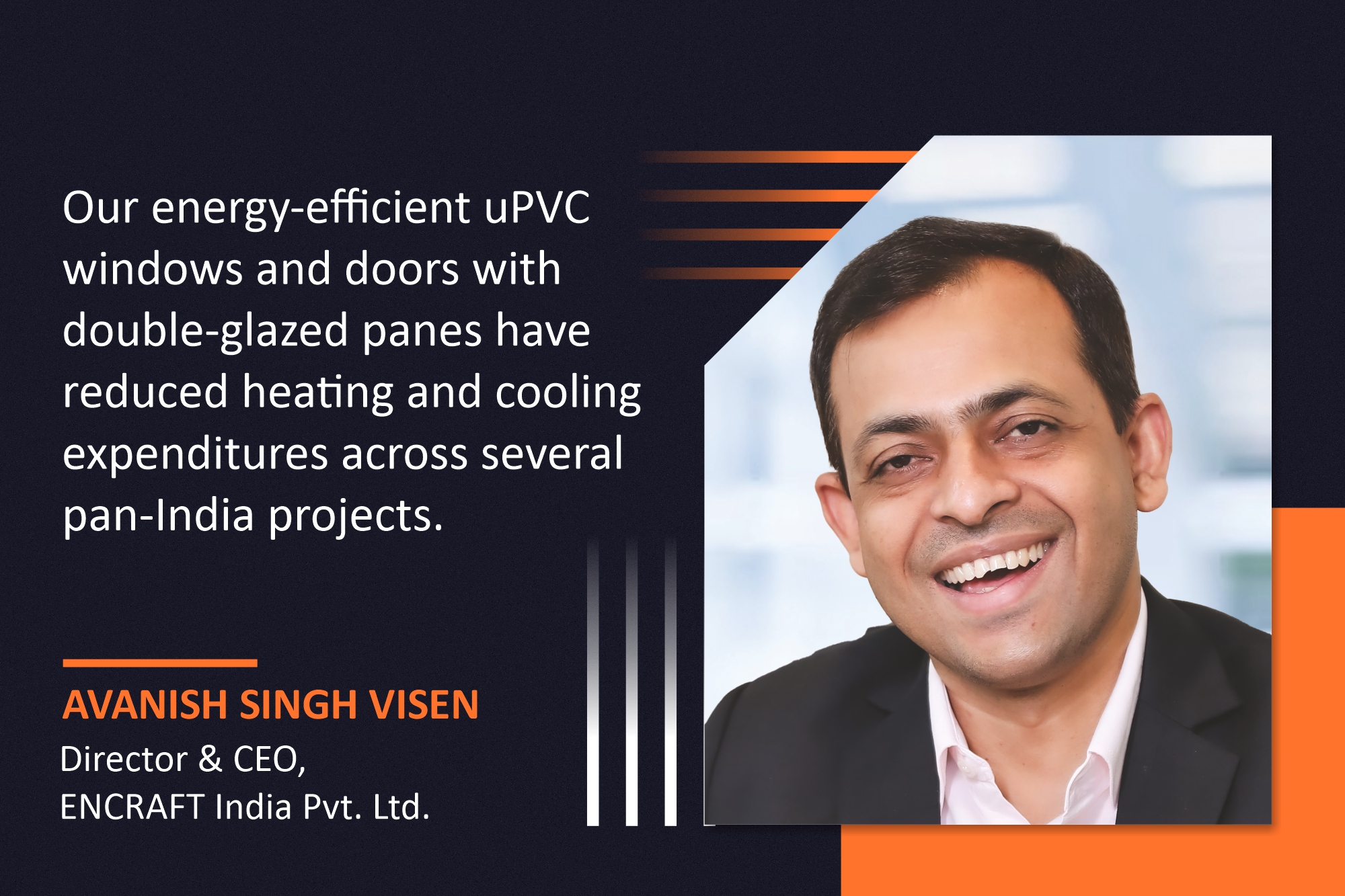Lets talk about high-rise fenestration systems

As sustainability becomes more critical, advancements in fenestration such as Low-E glazing, insulated glass, and energy-efficient materials are redefining building designs, increasing energy efficiency, and supporting green building certifications worldwide.
What are the latest innovations in fenestration design that enhance energy efficiency and sustainability?
The most recent improvements in fenestration design aim to improve energy efficiency and sustainability. High-performance glazing solutions, such as low-emissivity (Low-E) glass, significantly limit heat transmission, resulting in appropriate indoor temperatures and lower energy use. Insulated glass units (IGUs) with several panes and inert gas fills enhance thermal performance.
With thermal breaks, innovative frame materials, such as uPVC and aluminium, improve insulation and lower heat loss and gain. Furthermore, sustainable methods such as recycled materials, eco-friendly coatings, and weather-resistant finishes help to create longer-lasting, energy-efficient fenestration solutions that comply with green building regulations.
How do your products contribute to achieving green building certifications?
Our products are intended to help achieve green building certifications by improving energy efficiency, sustainability, and environmental performance. Our windows and doors provide great insulation by combining high-performance materials such as uPVC and aluminium with thermal breaks, decreasing energy consumption for heating and cooling.
Low-emissivity (Low-E) glazing and insulated glass units (IGUs) significantly reduce heat transfer, allowing buildings to comply with strict energy efficiency regulations. Furthermore, our products are made utilisingusing sustainable processes, such as recycled materials and eco-friendly coatings, which reduce environmental impact and contribute to a building’s overall sustainability goals.
Our fenestration solutions contribute to green building certifications such as LEED, BREEAM, and IGBC by boosting natural lighting, lowering energy consumption, and maintaining indoor air quality.
Can you share examples of projects where your fenestration solutions have significantly reduced energy consumption?
Our fenestration solutions have played a critical role in decreasing energy usage across several PAN India projects. Whether it is residential, institutional, hotel, or commercial, installing our energy-efficient uPVC windows and doors with double-glazed panes reduced heating and cooling expenditures. These solutions improved the building’s thermal performance, illustrating how our products may contribute to more sustainable, energy-efficient surroundings.
What advancements have been made in materials to improve the durability and performance of fenestration systems?
Recent material developments have greatly improved the longevity and efficacy of fenestration systems. uPVC formulation innovations, such as high-impact modifiers and UV stabilisers, have boosted resilience to weathering, fading, and brittleness, ensuring longevity even in hostile environments.
uPVC and aluminium systems now have improved thermal breaks formed of polyamide strips, which reduce heat transmission and improve energy efficiency. Furthermore, new coatings and finishes, such as powder coatings and anodisation, provide greater resistance to corrosion and scratches. Laminated and low-emissivity (Low-E) glass technologies enhance insulation, reduce noise, and improve safety, making current fenestration systems more durable, energy-efficient, and sustainable than ever before.
How do your products withstand extreme weather conditions and maintain performance over time?
Our products are designed to withstand extreme climates, ensuring longevity and constant performance. Our fenestration solutions, made of high-quality materials such as uPVC and aluminium, are resistant to corrosion, UV damage, and temperature variations. Advanced sealing technologies and locking mechanisms strongly resist wind, rain, and temperature stress. Additionally, our products are rigorously tested to satisfy international requirements for impact resistance and water tightness, and we have world-class in-house material testing labs and live fenestration testing rigs for water tightness, air permeability, and wind load. Special glazing options, such as double or triple, improve insulation while reducing energy loss. These advancements ensure that our windows and doors retain their structural integrity, aesthetic appeal, and efficiency throughout time, irrespective of environmental difficulties.
What key factors should architects consider when specifying fenestration systems for high-rise buildings?
Structural integrity is critical; systems must withstand extreme wind loads and earthquake impacts. Energy efficiency is critical, necessitating sophisticated glass and insulation to improve thermal performance and lower energy usage. Weather resistance is vital for preventing water ingress and air leaks. Safety and security are paramount, with features such as impact-resistant glass and safe locking systems providing occupant protection. Aesthetic Integration guarantees that the fenestration complements the building’s design while still providing functionality. Finally, maintenance considerations are critical for keeping the systems functional and visually appealing over time.
For more details, visit: https://www.encraft.in/
Cookie Consent
We use cookies to personalize your experience. By continuing to visit this website you agree to our Terms & Conditions, Privacy Policy and Cookie Policy.










